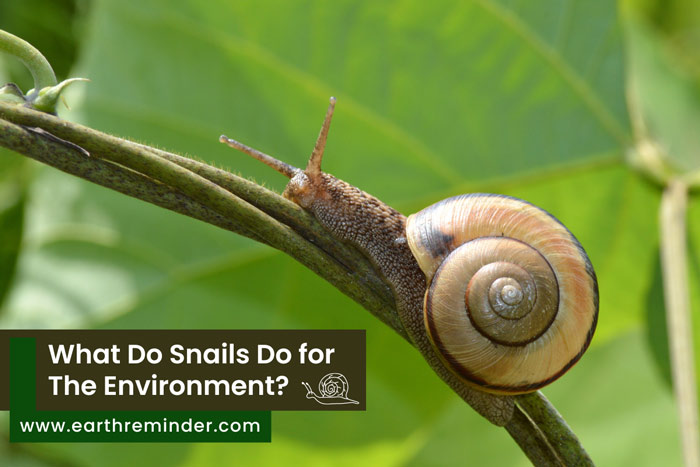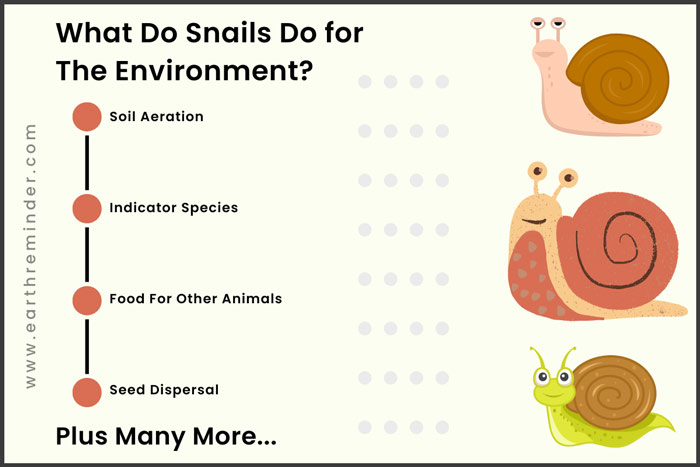What Do Snails Do for The Environment? | Purpose of Snails
Snails are slow-moving, mollusk creatures that are found all over the world. While snails may not seem like the most interesting creatures, they are important to nature and have been around for millions of years. Snails serve a variety of functions within an ecosystem, including food sources, decomposers, pollinators, and even medicinal purposes. Understanding what snails do for the environment is crucial for maintaining an ecosystem’s balance and health.
Table of Contents
Are Snails Good for The Environment?
Snails are indeed beneficial to the environment, and that can be said without a doubt. They provide valuable calcium and other minerals to the soil by breaking down decaying plant matter, which in turn helps to improve soil fertility. Snails also act as an important food source for many species of birds and other animals that live around the world.
What Is the Purpose of Snails?
- Snails play a crucial role in maintaining the ecological balance by serving as food for various mammals, birds, slow worms, earthworms, and insects.
- They assist in the decomposition of decaying and dead vegetation by eating it. Also, snails leave behind nutrient-rich feces that help to develop soil.
- The nutrient-cycling work of snails as environmental clean-up workers also includes fungi and some species, even specializing as consumers of dead animals.
- Snails serve as food for birds and other animals that pollinate flowers, which helps to maintain a natural balance. However, snails are capable of eating the plants in your yard and destroying them.
- They will further pick away dead garden residue and won’t harm your grass.
- The snails in aquariums consume algae, keeping the water clean and the fish healthy.
- Their shells protect them from predators, and just as their slime facilitates movement, it’s also good for our skin.
Also Read: How Does Energy Flow Through an Ecosystem?
What Do Snails Do for The Environment?
Through the decomposition of their bodies and shells, snails contribute significantly to forest decomposition and soil nutrification. In environments with low calcium levels, their dead shells can be a significant source of calcium for other creatures.
As they recycle nutrients in the forest, snails provide prey for a variety of vertebrates and invertebrates. Furthermore, their tendency to eat fungi may have an impact on fungal spore spread.
These species are also important environmental indicators and predictors of biodiversity. Globally, there are about 1,000 snail species that are considered endangered. In order to preserve them, the utmost care must be taken. Let’s look at their role in the environment in detail:
Soil Aeration
As snails move through the soil, they help to loosen and aerate it, improving soil structure and nutrient uptake for plants. By allowing air to circulate within the soil, snails can contribute to soil aeration. During their movement, snails build tunnels and burrows that improve soil structure and increase plant roots’ access to oxygen. Excreta from snails can provide nutrients to compacted or clay soils with poor drainage and oxygen exchange.
Snail droppings serve as natural fertilizer, enriching the soil with nutrients that are vital for plant growth, and contributing to the health of the ecosystem.
Also Read: How to Prevent Soil Degradation?
Indicator Species
In terms of ecosystem health, snails play an important role in maintaining ecosystem balance. Since their presence or absence might reveal information about the condition of their habitat, snails are frequently utilized as environmental health indicators.
For example, the decline in snail populations may be indicative of an ecosystem problem, such as pollution or habitat destruction. On the other hand, an increase in snail populations may indicate a healthier environment and more food availability. However, it is simply one factor among many. Therefore, it is critical to monitor snail population levels to assess the overall health of the environment.
Food For Other Animals
Snails are an important food source for many animals, including birds, mammals, and other invertebrates. Consequently, these predators play a crucial role in maintaining a healthy food chain balance and regulating snail populations.
Seed Dispersal
Some species of snails, particularly those that live in trees, are known to eat and disperse seeds. By doing so, new plant species can be established in an ecosystem and the diversity of plant life can be increased. Apart from these, the leaf litter layer is where snails spend most of their time. They eat dead and rotting plants, which accelerates decomposition.
Also Read: What Are the Parts of An Ecosystem?
Conclusion
The snail plays a variety of important roles within its ecosystems and plays a vital role in regulating plant development by eating plants. In return, birds, frogs, and some mammals rely on them for food. They are detritivorous and omnivorous and help regulate plant growth. In addition to decomposing organic matter, snails recycle nutrients in the soil, which are both beneficial to the environment.
In addition, several snail species are used as medicines in real medicine; some are cooked in many different cultures. Snails have inspired literature and art for ages as intriguing creatures. Even though snails may seem small and seemingly unimportant, they serve an important purpose in maintaining the health and well-being of the natural environment.

